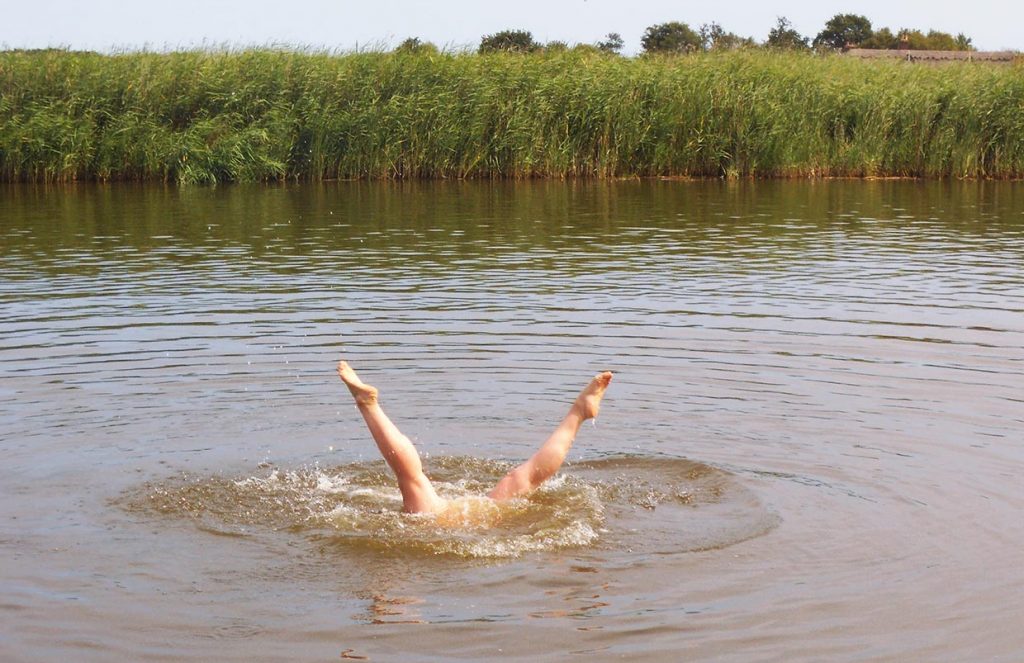A guest post of humourous prose from Rachel Yalisove

I’m sure there’s no need, but just as a reminder, you’re sitting on a boat deck right now. Not any boat, but one that sails. Imagine that, clean energy transport, who knew? I mean if we spilled some oil, we’d get a lot more press, but for now, let’s just coast off. But you need to watch out for the seals. Just because they have a bit of chub doesn’t mean they can’t get you. So if you see any large portly shadows lurking in the distance, slip that can of sardines under your windbreaker.
Also, there’s a learning curve. Literally. Don’t miss that curve up ahead. Or we might spend the night doing a back float. A seagull in a nose dive means duck and cover straight away. Because neither you nor the seagull have a good sense of space. You will get an idea of just how insignificant a human can be. So insignificant, that every creature cares more about your crackers than about you.
And sound travels much faster through the water. Which means gossip isn’t really an option, especially about anyone near a coastline. If you do it anyway, a nearby lighthouse might respond “I heard you!” in vigorous morse code. But the reverse is true too. Oliver will stick a microphone several meters deep, so you can listen to pretty much anything. Like those dolphins getting at it. Or the exasperated sigh of a fish because it’s running late but got lost in some coral. And on a good day, you will even hear a mollusk choking on its own pearl. Don’t worry, it will likely survive. Along the horizon, many barges will pass by. These large vessels will move slow and serene in the fog, since they are loaded down with the latest plastic devices from China, so new that the lead inside hasn’t yet been recalled. Once it is, you will see the barge make a quick U-turn and head straight back.
On land, look for rare birds like the elusive Bittern and Marsh Harrier. Both wear camouflage coloured feathers, mostly so they can’t find each other and start a fight. But as you know, evolution is mysterious and the camouflage often has the reverse effect. By that I mean two of them will back into each other by mistake. They will shout “Caw!” once or twice, search a long time for a couple of lost feathers, then try to figure out whose is whose. The interaction is not that different from two drunkards who mix up their beer cans and try to sort them by weight. Now the Marsh Harrier appears bold and magnificent with a graceful arched beak and white feathers along the crest of its head. It comes so close to a bald eagle that occasionally, one will get found and deported from the US. The Bittern, on the other hand, has a straight, fat beak with an eye on either side of its head, and kind of looks like an idiot.
Now let’s move on to human activity in these wetlands. Here, we have a bountiful source of peat. Its acidic quality has led to the spread of very unique plant species. So don’t be surprised if you see some little freaks out there. These peat deposits have attracted human activity since Roman times because it’s an efficient source of energy. Even though it gives off loads of emissions, the council lets it go because you can bury your used carbon back in the peatlands without much trouble.
This is an important insight on policy, as it means you can do whatever you want so long as you have a good cover-up. Another use of the wetlands is reed thatching. Norfolk reed is the best kind for a thatch roof because it can last for as long as seventy years. Those who learn this for the first time will wonder why we now use asphalt shingles instead. The reason is unknown but, again, it is probably worth looking into a cover-up.
The most inspiring human activity here today, however, is the very one in which you are now engaged. And that is, an interdisciplinary ensemble on top of a sailboat. Here you are, jumbled together with poets, painters and graphic designers alike. Oliver wants you to come together and create something extraordinary. It is an exciting mystery to see just how we all will influence each other. Will the anal designer lose his sanity over the painter’s impressionistic style? Will the poet create a tacky word collage in the corner of the painter’s canvas while she’s sleeping? Will the painter make racy interpretations of the poet’s work and get him into a lawsuit? And how will all of this take place in the wind and the rain? We will find out soon enough. Until then, enjoy this brief moment of peace and remember to hide away your biscuits!
R. Yalisove
Rachel was a member of crew on the Sail Britain / Royal College of Art expedition in Norfolk. Rachel has a gift for humuorous prose… www.rachelyalisove.com